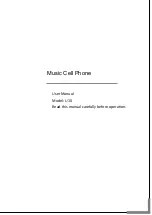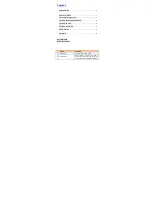
Administrator’s Guide for SIP-T5 Series Smart Media Phones
654
DTMF
DTMF (Dual Tone Multi-frequency), better known as touch-tone, is used for telecommunication
signaling over analog telephone lines in the voice-frequency band. DTMF is the signal sent from
the IP phone to the network, which is generated when pressing the IP phone’s keypad during a
call. Each key pressed on the IP phone generates one sinusoidal tone of two frequencies. One is
generated from a high frequency group and the other from a low frequency group.
The DTMF keypad is laid out in a 4×4 matrix, with each row representing a low frequency, and
each column representing a high frequency. Pressing a digit key (such as '1') will generate a
sinusoidal tone for each of two frequencies (697 and 1209 hertz (Hz)).
DTMF Keypad Frequencies:
1209 Hz
1336 Hz
1477 Hz
1633 Hz
697 Hz
1
2
3
A
770 Hz
4
5
6
B
852 Hz
7
8
9
C
941 Hz
*
0
#
D
Methods of Transmitting DTMF Digit
Three methods of transmitting DTMF digits on SIP calls:
RFC 2833
-- DTMF digits are transmitted by RTP Events compliant to RFC 2833.
INBAND
--
DTMF digits are transmitted in the voice band.
SIP INFO
-- DTMF digits are transmitted by SIP INFO messages.
The method of transmitting DTMF digits is configurable on a per-line basis.
RFC 2833
DTMF digits are transmitted using the RTP Event packets that are sent along with the voice path.
These packets use RFC 2833 format and must have a payload type that matches what the other
end is listening for. The payload type for RTP Event packets is configurable. IP phones default to
101 for the payload type, which use the definition to negotiate with the other end during call
establishment.
The RTP Event packet contains 4 bytes. The 4 bytes are distributed over several fields deNoted
as Event, End bit, R-bit, Volume and Duration. If the End bit is set to 1, the packet contains the
end of the DTMF event. You can configure the sending times of the end RTP Event packet.
INBAND
DTMF digits are transmitted within the audio of the IP phone conversation. It uses the same
Summary of Contents for CP969
Page 1: ......
Page 22: ...Administrator s Guide for SIP T5 Series Smart Media Phones xxii ...
Page 30: ...Administrator s Guide for SIP T5 Series Smart Media Phones 8 ...
Page 474: ...Administrator s Guide for SIP T5 Series Smart Media Phones 452 ...
Page 781: ...Troubleshooting 759 The phone begins rebooting Any reboot of the phone may take a few minutes ...
Page 787: ...Troubleshooting 765 information on capturing packets refer to Capturing Packets on page 735 ...
Page 788: ...Administrator s Guide for SIP T5 Series Smart Media Phones 766 ...
Page 864: ...Administrator s Guide for SIP T5 Series Smart Media Phones 842 ...
















































